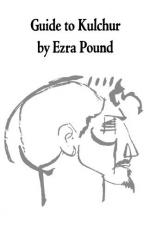|
This section contains 548 words (approx. 2 pages at 400 words per page) |

|
Guide to Kulchur Summary & Study Guide Description
Guide to Kulchur Summary & Study Guide includes comprehensive information and analysis to help you understand the book. This study guide contains the following sections:
This detailed literature summary also contains Topics for Discussion and a Free Quiz on Guide to Kulchur by Ezra Pound.
Ezra Pound (1885-1972) is one of the great figures of the Modernist cultural movement within the first fifty years of the 20th century. No one is better known for promoting modernist ideas and approaches in poetry. Pound was an American expatriate, critic and an intellectual; he opened up exchanges between the works and ideas of many of his contemporaries. Pound is also famous for his movement within poetry writing poetry that draws on classic Chinese and Japanese poems, which emphasize tight, concise and clear prose. His most famous work occupied the nearly last 50 years of his life, his epic The Cantos.
However, Pound's writings are not confined to poetry. Guide to Kulchur is a compilation of a wide range of Pound's non-fiction prose essays, most of which are quite short. It would also be his last non-fiction work. Written in 1938, the book contains fifty-eight chapters with a post-script written in 1952. The essays reveal Pound's cultural, political and economic views on many issues and focuses on his opinions about philosophy, poetry, epistemology, religion and, most of all, culture.
Nothing really ties the essays together; instead, the book lacks a plot, has no narrative structure, and, even more, the discourse and the essays themselves display a total absence of clear reasoning. Pound jumps back and forth between various cultural, political and economic observations, comments on obscure historical and artistic pictures, and throws in aphorism and Chinese ideograms along the way. Those new to Ezra Pound will find Guide to Kulchur quite daunting because it is very difficult to understand how it fits together.
Perhaps the main idea of Guide to Kulchur is Pound's conception of "kulchur" which he defines as "the history of ideas going into action." Pound claims that Guide to Kulchur is written for those men interested in learning who never received a formal education. These are men whose minds have not been ossified by the structure and reading canon of modern educational institutions, particularly universities.
Pound constantly complains that the world of ideas is become trapped and fixed, which leads to the death of civilizations. Pound insists the Kulchur must be understood not as knowledge but as what remains when knowledge is forgotten. Thus, in cultural studies, one misses the essence of a culture by learning true propositions about it. One might think that this provides a reason that Pound seems uninterested in communicating clear, detailed systematic information about his cultural opinions.
The book is divided into six parts and thirteen sections, but little ties the parts and sections together. However, one will find continuity among the expression of Pound's opinions, many of which are quite infamous and may leave the reader disgusted.
While Pound admires men like Confucius, he also compares the greatness of Mussolini to Confucius. Pound was an ardent fascist, as were many Western intellectuals in the early 20th century. Pound also expresses anti-semitic opinions and constantly complains about central banking and sometimes combines the two. Pound is obsessed with combating the idea of "usura" or the practice of usury, charging people money for the use of money. For Pound, usury is at the heart of all economic problems and corrupts and devours cultures. The reader will also run across Pound's appreciation of the American founders and the Catholic Church.
Read more from the Study Guide
|
This section contains 548 words (approx. 2 pages at 400 words per page) |

|



